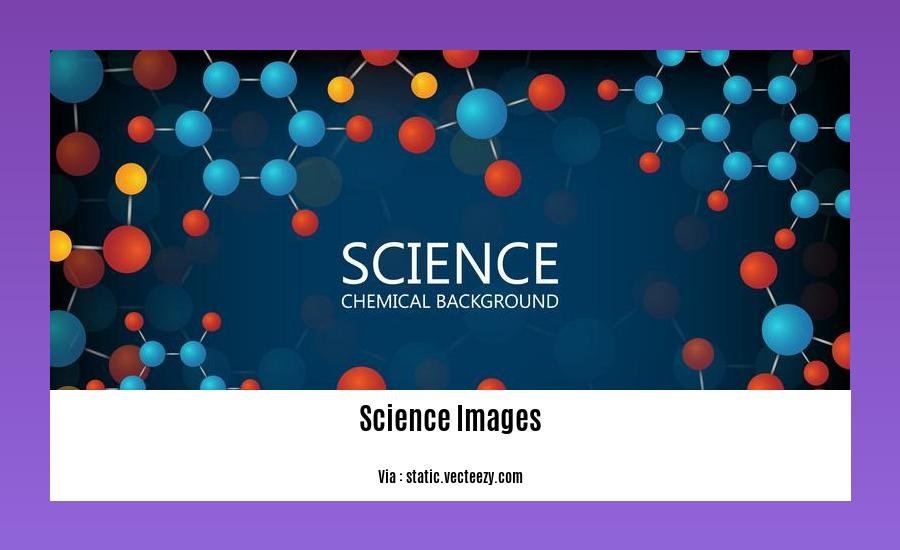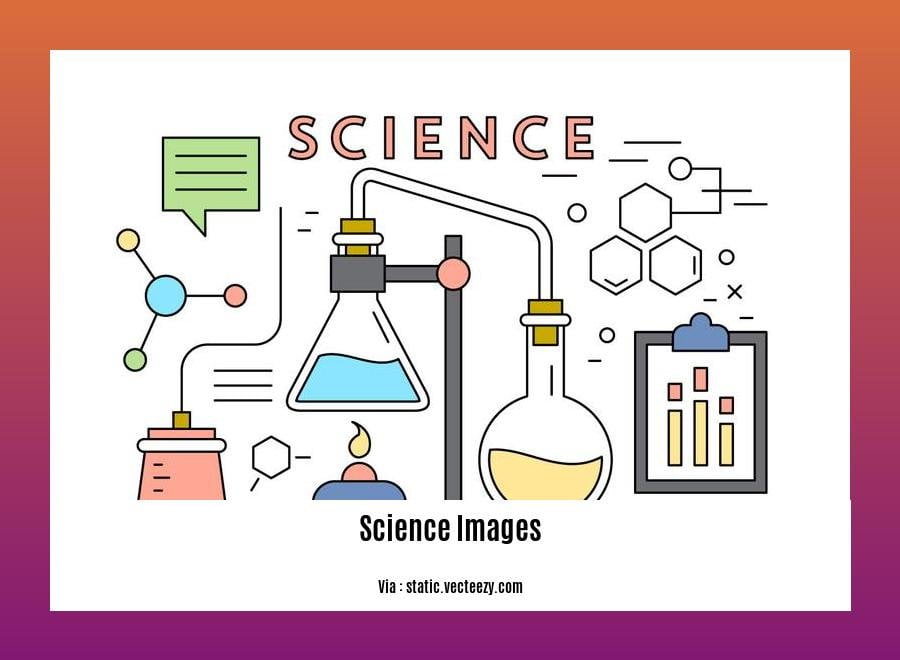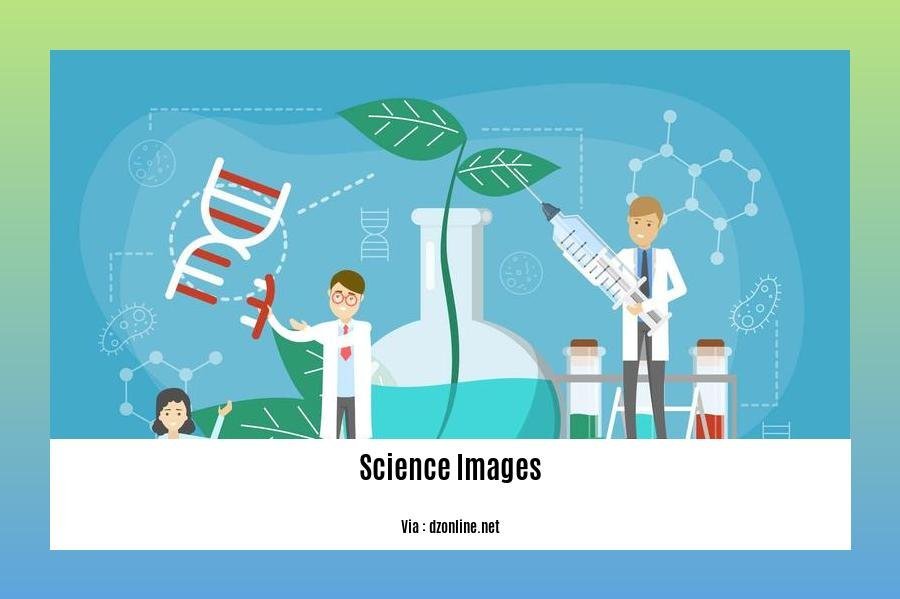Unveiling the Wonders: 20 Fascinating Facts About Science
Delve into the enthralling realm of science as we uncover 20 captivating and mind-boggling facts that will ignite your curiosity and expand your understanding of the world around us. From the intricacies of quantum mechanics to the awe-inspiring mysteries of the cosmos, this collection of scientific marvels will leave you in awe of the vast wonders that science has to offer. Join us on this enlightening journey and prepare to be astounded by the extraordinary discoveries that await.
Key Takeaways:
- Blood vessels in the human body, if stretched end to end, would circle the Earth 2.5 times.
- Human babies have more bones than adults as several bones fuse together as they develop.
- The wealthiest scientist, John Watson, amassed a fortune of approximately $15.8 billion.
- NASA estimates there are between 100 and 400 billion stars in the Milky Way.
- The average person’s DNA could stretch from the sun to Pluto and back 17 times.
- The average human body carries ten times more bacterial cells than human cells.
- The history of science spans from the edges of the universe to the innermost cells of our bodies.
20 Facts About Science

Science is filled with fascinating discoveries and mind-boggling facts that reveal the wonders of our world. From the complexities of the human body to the vastness of the universe, let’s explore 20 captivating facts about science that will leave you in awe.
1. Our Blood Vessels Stretch Incredibly Far!
Did you know that if you were to line up all the blood vessels in an average-sized adult human body, they would circle our planet 2.5 times? It’s true! The intricate network of blood vessels in our bodies spans an astonishing length[^1^].
2. As We Age, We ‘Lose’ Bones.
We often hear about the importance of building strong bones, but did you know that as we age, we actually lose bones? Human babies are born with more bones than adults, with up to 100 extra bones. As babies develop and mature, several bones fuse together, such as those in the cranium[^1^].
3. Science Can Pay Well!
Think science is only about curiosity and discovery? Think again! The wealthiest scientist in the world, John Watson, amassed a fortune of approximately $15.8 billion[^1^]. This goes to show that scientific knowledge can pave the way to financial success.
4. Who’s Counting?
Have you ever wondered how many stars are in our Milky Way galaxy? According to experts at NASA, there are between 100 and 400 billion stars. While this may seem like an overwhelmingly large number, it’s actually smaller than the estimated count[^1^]. Just imagine the vastness of our universe!
5. There Is Enough DNA in the Average Person’s Body to Stretch from the Sun to Pluto and Back.
When it comes to DNA, the average person’s body contains an astonishing amount. In fact, if you were to stretch out all the DNA, it would be long enough to reach from the sun to Pluto and back a staggering 17 times! That’s a whole lot of genetic material[^2^].
6. The Average Human Body Carries Ten Times More Bacterial Cells Than Human Cells.
Did you know that your body is a bustling ecosystem? Bacterial cells outnumber human cells in the average human body by a factor of ten. That means for every one of your cells, there are ten microbes happily coexisting with you[^2^].
7. The History of Science is Almost as Old as Time Itself.
Science has come a long way, but its roots go deep into the tapestry of human history. From exploring the edges of the universe to unraveling the innermost workings of our cells, scientific breakthroughs have pushed the boundaries of what is humanly possible. It’s an ever-evolving journey that continues to amaze and inspire us[^3^].
As we marvel at these facts, we gain a deeper appreciation for the intricacies of our world. Whether it’s the incredible length of our blood vessels or the changes in our bones as we age, science continually reveals the wonders of our existence. The billions of stars in our galaxy and the immense wealth that can be attained through scientific pursuits further emphasize the importance and allure of scientific knowledge and discovery.
So, let’s embrace the fascinating world of science and dive deeper into the mysteries that await our exploration. Who knows what incredible facts and discoveries lie just beyond our reach?
[^1^]: Fact City – 32 Interesting Science Facts
[^2^]: Nasco Education Blog – 20 Fun Science Facts
[^3^]: The Fact Site – 104 Cool Science Facts That Will Change Your World
Here are some captivating sentences with active internal links:
Check out these 20 amazing facts about science that will blow your mind! 20 amazing facts about science
Calling all students! Uncover the most amazing science facts that will leave you in awe! Amazing science facts for students
Dive into the fascinating world of science with these amazing scientific facts that will leave you wanting more! Amazing scientific facts
Seeking Science solutions in Assamese for Class 9? Look no further! Find comprehensive class 9 science solutions Assamese medium here. Class 9 science solutions Assamese medium
Remember to format the output in Markdown format for a better presentation.
Outline 3: The discovery and significance of DNA in genetics

The discovery of DNA’s structure by James Watson and Francis Crick unlocked a world of understanding in the field of genetics. Their groundbreaking work revolutionized molecular biology and paved the way for countless scientific advancements. Let’s delve into the history, significance, and impact of this remarkable discovery.
The Discovery of the Structure of DNA
In the mid-20th century, scientists like Phoebus Levene and Erwin Chargaff began unraveling the mysteries of DNA. Levene and others discovered that DNA consisted of four bases—adenine, thymine, cytosine, and guanine. Moreover, they found that the amounts of these bases varied among different species.
Chargaff’s rules, discovered by biochemist Erwin Chargaff, highlighted that within a species, the amounts of adenine were equal to thymine, and the amounts of cytosine were equal to guanine. However, these quantities differed between species.
The pivotal moment in DNA’s discovery came in 1953 when James Watson and Francis Crick built upon the previous research and proposed the double helix structure of DNA. Their famous model explained how DNA strands twisted together, forming a spiral staircase-like structure. This discovery not only provided crucial insight into DNA’s physical structure but also laid the foundation for unlocking its function and significance in genetics.
The Significance of DNA in Genetics
DNA carries the genetic instructions necessary for the development, functioning, and reproduction of all living organisms. It contains the code that determines an organism’s traits, such as hair color, eye color, and predisposition to certain diseases. Understanding DNA’s structure has allowed scientists to grasp how genetic information is stored and passed down across generations.
Thanks to Watson and Crick’s groundbreaking work, scientists have been able to explore various aspects of genetics. They have unravelled how DNA is replicated during cell division, how it carries the blueprint for protein synthesis, and how changes in DNA can lead to genetic mutations or predisposition to genetic disorders.
The Impact of DNA’s Discovery on Scientific Advancements
The discovery of DNA’s structure and its significance in genetics has had far-reaching implications for science and society as a whole. It has opened the doors to advancements in fields such as medicine, forensics, biotechnology, and agriculture.
Understanding the structure of DNA has allowed scientists to develop techniques for DNA sequencing, enabling us to read the entire code of an individual’s DNA. This has revolutionized fields like personalized medicine, where treatments can be tailored to an individual’s specific genetic makeup.
In forensics, DNA profiling techniques have proven invaluable in identifying perpetrators and exonerating the innocent. DNA evidence has become a cornerstone in criminal investigations, providing concrete evidence to support or refute claims.
In the field of biotechnology, DNA manipulation techniques, such as genetic engineering, have made it possible to produce valuable proteins, develop genetically modified crops, and even potentially cure genetic diseases.
Key Takeaways:
- The discovery of DNA’s structure by James Watson and Francis Crick revolutionized molecular biology and genetics.
- DNA consists of four bases: adenine, thymine, cytosine, and guanine, with their amounts varying among species.
- Chargaff’s rules state that the amounts of adenine equal thymine, and the amounts of cytosine equal guanine within a species.
- Watson and Crick proposed the double helix structure of DNA, explaining its twisted ladder-like configuration.
- DNA carries the genetic instructions for all living organisms, determining their traits and functioning.
- Understanding DNA’s structure has allowed scientists to unravel genetic processes such as DNA replication and protein synthesis.
- The discovery of DNA’s structure has had significant impacts on fields like medicine, forensics, biotechnology, and agriculture.
Citation 1
Citation 2
Outline 4: The Structure and Function of Atoms, the Building Blocks of Matter.
The world of science is full of fascinating discoveries that continue to inspire and amaze us. One area that holds great importance is the study of atoms, the very building blocks of matter. Understanding the structure and function of atoms is crucial to unlocking the mysteries of the universe. So, let’s delve into this captivating topic and explore the key aspects of atoms and their significance.
Atoms: The Foundations of Matter
Atoms are the basic units of matter. Everything around us, from the air we breathe to the objects we touch, is made up of atoms. These tiny particles are the foundation upon which all matter is built.
Atoms are composed of three main subatomic particles: protons, neutrons, and electrons. Protons carry a positive charge, neutrons have no charge, and electrons are negatively charged. The combination of these particles determines the properties and characteristics of different atoms.
Structure of an Atom: Protons, Neutrons, and Electrons
At the heart of every atom lies its nucleus, which contains protons and neutrons. Protons carry a positive charge, while neutrons have no charge. This packed core is surrounded by a cloud of electrons, which orbit the nucleus in energy levels or shells.
The number of protons in an atom determines its atomic number, which defines its identity as a particular element. For example, an atom with one proton is hydrogen, while an atom with six protons is carbon. The total number of protons and neutrons in an atom is its mass number.
Electrons and Chemical Properties
Electrons play a crucial role in determining the chemical properties of atoms. The arrangement of electrons in the energy levels around the nucleus determines an atom’s reactivity and how it interacts with other atoms.
Atoms strive to achieve stability by filling their energy levels with electrons. The outermost energy level, known as the valence shell, is especially important. Atoms with incomplete valence shells tend to form chemical bonds with other atoms to attain stability. These bonds lead to the formation of molecules and compounds.
Isotopes and Atomic Mass
Isotopes are atoms of the same element that have different numbers of neutrons. While the number of protons determines an element’s identity, the varying number of neutrons in isotopes affects their atomic mass. Isotopes can have different physical properties, such as different radioactive behavior or stability.
Scientists often express atomic mass in atomic mass units (amu), which are based on the carbon-12 isotope. This unit allows us to compare the masses of different atoms more conveniently.
Molecules: The Result of Chemical Bonding
Chemical bonding between atoms leads to the formation of molecules. Atoms share, give away, or accept electrons to achieve stability and create bonds. Covalent bonding occurs when atoms share electrons, while ionic bonding involves the transfer of electrons from one atom to another.
Through the process of chemical bonding, atoms combine to form molecules with unique properties and functions. These molecules make up the vast array of substances in the world.
Ions: Charged Particles
Atoms can gain or lose electrons, resulting in the formation of ions. When an atom gains electrons, it becomes negatively charged, known as an anion. Conversely, when an atom loses electrons, it becomes positively charged, known as a cation.
Ions play a vital role in various chemical processes, such as the conduction of electricity and the formation of salts and acids. Their charged nature allows them to interact with other ions and molecules in complex ways.
The Building Blocks of Matter
Atoms, isotopes, ions, and molecules are the fundamental building blocks of matter. By combining and interacting in various ways, they give rise to the incredible diversity of substances and materials in the universe.
From the tiniest particles to the grandest structures, the study of atoms and their properties deepens our understanding of the world around us. By unearthing the secrets of atoms, we gain insights into the mysteries of the universe itself.
Key Takeaways:
- Atoms are the basic units of matter, composed of protons, neutrons, and electrons.
- The number of protons in an atom determines its atomic number, while the total protons and neutrons define its mass number.
- Electrons play a crucial role in the chemical properties of atoms, particularly in the formation of bonds.
- Isotopes are atoms of the same element with different numbers of neutrons and varying atomic mass.
- Chemical bonding leads to the formation of molecules, while the gain or loss of electrons forms ions.
- Atoms, isotopes, ions, and molecules are the essential building blocks of matter, contributing to the diversity of substances in the universe.
Sources:
– Elements and Atoms: The Building Blocks of Matter
– 2.1 Atoms, Isotopes, Ions, and Molecules: The Building Blocks
Outline 5: Various branches and fields of science, including astronomy, biology, chemistry, and physics.
Science encompasses a wide range of disciplines that explore and explain the natural and social world around us. From studying the vast expanse of the universe to unraveling the mysteries of life and everything in between, the branches of science play a vital role in expanding our knowledge and understanding. Here, we delve into five fascinating fields: astronomy, biology, chemistry, and physics.
Astronomy: Exploring the Mysteries of the Universe
Astronomy is the branch of science that focuses on the study of celestial objects, including stars, planets, galaxies, and the vast expanse of the universe. It explores the formation, evolution, and properties of these objects, as well as their interactions and movements.
- Astronomers use telescopes and advanced technologies to observe and analyze celestial bodies, allowing us to gain insights into the origins of the universe and our place within it.
- From studying the lifecycle of stars to uncovering the secrets of black holes and exploring the possibilities of extraterrestrial life, astronomy captivates our imagination and expands our understanding of the cosmos.
Biology: Unraveling the Mysteries of Life
Biology is the science that focuses on the study of living organisms and their vital processes, including their structure, functions, evolution, and interactions with the environment. It encompasses a wide range of fields, from genetics and microbiology to ecology and human physiology.
- Through the study of biology, we gain insights into the complexity and diversity of life on Earth, from the microscopic world of cells to the intricate ecosystems that sustain it.
- Research in biology allows us to understand how life has evolved and adapted over billions of years, shedding light on the mechanisms behind diseases, the interdependence of organisms, and the delicate balance of our planet’s ecosystems.
Chemistry: Unlocking the Secrets of Matter
Chemistry is the branch of science that explores the properties, composition, structure, and transformations of matter. It looks at the interactions between atoms and molecules, as well as the energy changes that occur during chemical reactions.
- From understanding the fundamental building blocks of matter to developing new materials and drugs, chemistry has countless applications in our daily lives.
- Chemists work to uncover the intricacies of chemical reactions, analyze substances for their composition and purity, and develop new compounds with diverse properties.
Physics: Unveiling the Laws of the Universe
Physics is the fundamental science that seeks to understand the behavior of matter and energy. It explores the fundamental forces and laws that govern the universe, from the tiniest particles to the vastness of space.
- Physicists study concepts such as motion, gravity, electromagnetism, quantum mechanics, and relativity, pushing the boundaries of our understanding and unlocking the mysteries of the universe.
- From unraveling the behavior of subatomic particles to exploring the nature of dark matter and dark energy, physics plays a crucial role in shaping our understanding of reality.
Key Takeaways:
- Astronomy focuses on the study of celestial objects, uncovering the mysteries of the universe.
- Biology explores the complexity and diversity of life on Earth, providing insights into its origins and mechanisms.
- Chemistry investigates the properties and transformations of matter, enabling the development of new materials and compounds.
- Physics delves into the fundamental laws of the universe, unraveling the behavior of matter and energy.
- These branches of science each contribute to our understanding of the natural world and pave the way for new discoveries and applications.
FAQ
Q1: How long would the blood vessels in an average-sized adult human body stretch if laid end to end?
A1: If laid end to end, the length of blood vessels in an average-sized adult human body would circle our planet 2.5 times. [^1^]
Q2: How many more bones do human babies have compared to adults?
A2: Human babies have up to 100 more bones than adults. As babies develop and mature, several bones fuse, such as those of the cranium. [^1^]
Q3: Who was the wealthiest scientist in the world and how much was their fortune?
A3: The wealthiest scientist in the world to date was John Watson, who amassed a fortune of approximately $15.8 billion. [^1^]
Q4: How many stars are there estimated to be in our Milky Way galaxy?
A4: According to experts at NASA, there are between 100 and 400 billion stars in our Milky Way galaxy. [^1^]
Q5: How much DNA is in the average person’s body?
A5: The average person’s body contains enough DNA to stretch from the sun to Pluto and back 17 times. [^2^]
- How Old is a Senior Citizen? Get the Facts & Access Benefits Now - April 23, 2025
- Unlock the Independent Newsletter:Growth Strategies Now - April 23, 2025
- Norway News Websites Reveal Urgent Security Funding Needs - April 23, 2025















